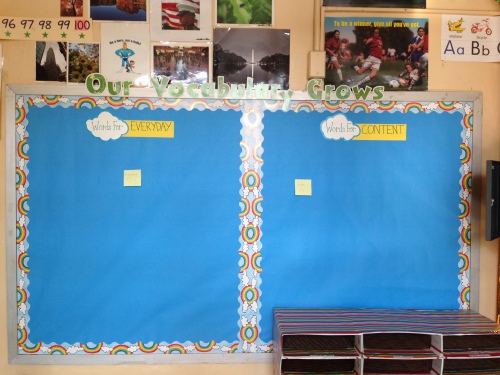One thing I don’t ever want to hear my students say is, “I can’t.” That’s the kind of toxic language that too many students have internalized too many times. Too many hopeful, eager students have been turned sour by disbelieving, uninspiring adults. Too many promising minds have been lost to too many negative mouths.
A little boy in my class came to me from a less restrictive environment a few months ago. The poor kid was floundering, lost in a tide of confusion and self-doubt. He looked – and was – miserable. Distant. Blank.
At first, he started coming to me just for reading. He got a special seat right next to me and, little by little, started coming out of his shell. Though he’d sometimes cry, “I want to go back to my real class,” I remained firm with him about all the reasons he should – no, must – embrace his new class. One of my most gregarious students took him under his wing, and I made sure to do the same. On more than one occasion, I made it crystal clear to him that in my class, he was expected to conduct himself – socially and academically – in certain ways. That meant trying things that were hard, learning ways to manage them, and eventually, succeeding at them. He needed sensitivity and caring, but he needed to be pushed, too.
It may have been tough love, but he got the message (and learned to take pride in a new way of being). Before long, the boy was leaping out of his chair every time I came to his room to bring him to mine. His dazzling smile spoke words he was unable to: “I’m learning. I’m improving. I’m gaining confidence. I’m capable. I’m smart.”
Soon enough, his family agreed to move him into my classroom full-time. His network of new friends expanded, as did his academic knowledge and his understanding of his own potential. During the first full week in my class, he produced math writing that impressed his classmates, me, and the administration. He proudly took his polished, if not perfect, work to the common bulletin board all classes share on my floor, and hung his paper there himself, an enduring trophy on display to remind him of his ability. Each day when we passed the bulletin board after lunch, his new friends and him would beam just knowing it was there.
Those who believed in him from the start were thrilled with his new zest for school, love of learning, and newfound confidence. “You see? I told you he could do it!” came from one colleague. When I told the principal about the way he races into class announcing to me he’s here and ready to learn, she said, “That gives me goosebumps.” Those of us who believed in him relished in his newfound, humble pride. Those who never took the time to try found no joy in seeing they were wrong all along.
But the proof is there.
On previous math tests, he averaged in the 40s. On his first test in my class, he scored an 80. Today, finishing up the second test, he scored an 88.
This boy, who barely could get a word down on paper at the beginning of the year, now uses outlines to write topic sentences, supporting details, and a conclusion.
This boy, who spent more time looking at his fingers than worrying about books, now listens to complex texts and discusses them with partners.
Don’t tell him what he can’t do. Don’t make him think he’s less than awesome. He deserves better.
This isn’t only about me. Plenty of teachers have high expectations and powerful beliefs in their students’ abilities. But too many don’t give their students a chance. That pisses me off. We are meant to teach the students in front of us: not just the easy ones, not just the ones who retain and understand everything.
Saying a child can’t do something, or promoting that belief with actions toward the child, is poisonous. Poison injures, sickens, and defeats. If you think the kids don’t know they’re being poisoned, just consider the difference my student has enjoyed. Coming from a culture where the bar is set low and students are encouraged to crawl under it, going to a culture where the bar is set high and students are implored to jump over it, he sees it’s not about what you can’t do, it’s about what you will do. And you will do it.
I firmly believe that our students will only rise to the challenges we present to them. If we set a standard of busy work being acceptable, confusion being typical, and belittling being preferable, we will surely lose our kids. Do they deserve that? It makes me angry to think there are people who don’t realize they don’t.
Counter those expectations with challenging work, clarity, and emotional support, and just like the little boy’s smile, all students will have a chance to shine as they were meant to.










